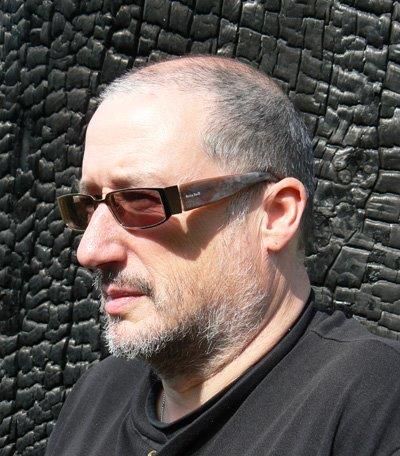


I am concerned with my own existence and my interaction with both the material and non-material world. In my interaction with other humans, I am almost always reminded that I am perceived as a disabled person, this is manifest in their actions towards me and their interaction with me.
Much of my work explores my personal analysis of these everyday interactions. Sometimes art making becomes self-psychoanalysis. As the artist Georg Baselitz said, ‘you cannot escape your history and the trauma of your experience ...What are the echoes that follow you...’?
As a sculptor I work with a wide range of materials depending on what material is right to develop the idea. I constantly return to direct carving of stone as a discipline but I often use what has been called ‘the impedimenta of disability’ in my work. This might be charity collecting cans, old wheelchairs or invalid carriages, my intention being to transmute or subvert them into something else through sculpture. I have also worked with light, neon and film.
My work has also utilised found materials and objects that have had a particular identity and could be transmuted as part of the realisation of the idea. As a disabled person, many of the objects I have used or ideas I have pursued have been within a disability context and have resonated with my experience as a disabled person, both individually and in my interaction with the world.
There are usually layers of meaning to entice other humans into the work or the game of it. Disabled people often seem invisible or ‘other’ and I have explored this notion.
Predominantly I am interested in how thoughts and ideas can be translated into form and therefore say something in a new and expressive way.
I return to themes, usually when I review older works or ideas that were never fully resolved at the time. I am reminded of Henry Moore’s comment about walking along the same stretch of beach but finding new and interesting stones that had been there, unnoticed. Or, like re-reading a book when you discover things that you had missed the first time, perhaps due to life and experience.
I sometimes build on these past works or forgotten ideas.
The curator Simon Boase wrote: ‘Heaton’s work is both confrontational and playful, combining familiar images with edits or adaptations which prompt us to consider pieces’ less visible themes. The notion of loops and cycles is key within Heaton’s practice; ideas are continuously connected across different works and years, while at the same time this cyclical viewpoint puts linear continuity into question.’
The writer and critic Allan Sutherland wrote: ‘Heaton’s early sculptures often use what I once described in Disability Arts in London magazine as ‘the everyday impedimenta of disability: collecting cans, NHS wheelchairs, X-rays, Part M of the Building Regulations’. But his work contradicts the normal associations of such materials by turning them into profound and joyously witty statements about the nature of our oppression - Picasso frequently used found materials, as in his delightful Bull’s Head, (1942) created from the saddle and handlebars of a bicycle. The Disability Arts version of this is Tony Heaton’s Great Britain from a wheelchair, a map of Great Britain made from parts of two old NHS wheelchairs. ‘